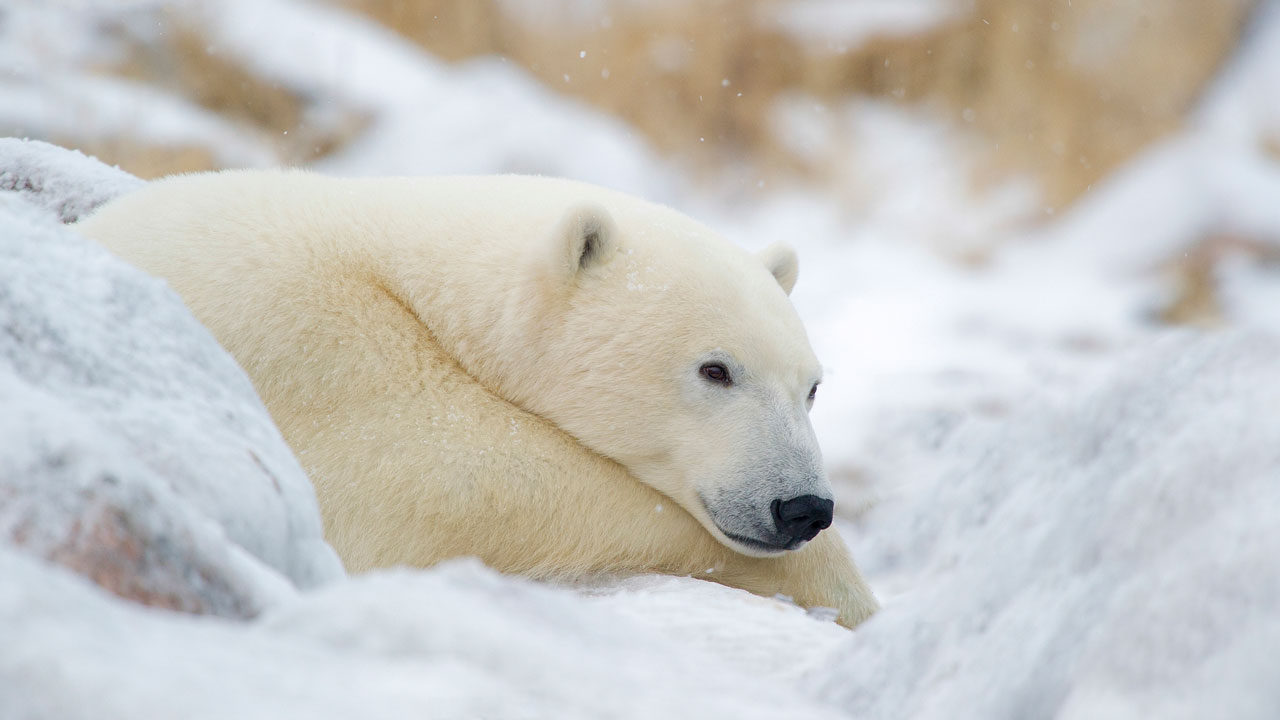
Polar Bear Photography Safari
Embark on one of the world’s premier photographic safaris and experience rare ground-level access to polar bears in the pristine, untouched wilderness of northern Manitoba.
Posted: September 24, 2020
From far away, it’s difficult to spot a polar bear. Their yellowish-white fur blends perfectly with the snow and ice that covers the desolate tundra, and they appear like nothing more than lumps of snow or pale rocks.
Up close, there’s no mistaking a polar bear for a lifeless object. You can see huge muscles that ripple underneath a robe of thick fur, long claws that scrape across the ground as they walk, and dark, curious eyes that peer up at the windows of your Tundra Buggy. The first time a lone female approaches our vehicle and then stands on her hind legs to get a better vantage, I swear she’s looking at me. It’s tempting to open my window and reach out for some polar bear love.
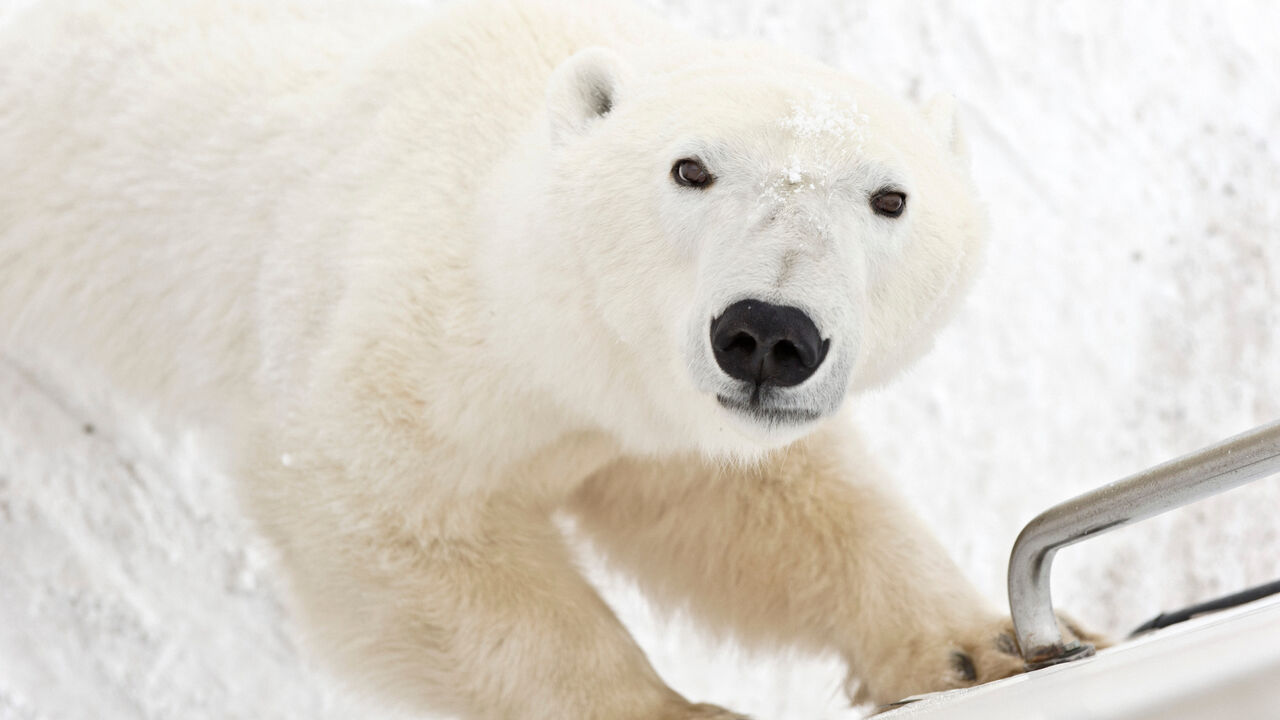
Of course, I don’t really want to pet a polar bear. Like the other tourists sharing the giant truck with me on this polar bear safari in Canada, I just want to observe the magnificent animals in their natural environment, and perhaps see an arctic fox or snowy owl.
An organized tour is definitely the way to go in Canada’s north. Fresh Tracks Canada and The True North Collection work with Frontiers North and Churchill Wild, companies with decades of experience delivering pioneering polar bear expeditions to adventurous travellers. Their expert knowledge of the animals and the tundra environment ensure that wildlife safaris are both safe and seamlessly put together.
Like me, most travellers to the north are drawn to wild places — corners of the globe that remain remote and untamed. In isolated Churchill, Manitoba, population 899, you get the sense it’s still very much the frontier. During fall bear season, a volunteer Polar Bear Alert crew patrols the streets for the ever-curious bears and hazes any out of town. It’s enough to give tourists pause; we’re instructed to walk in groups after dark.
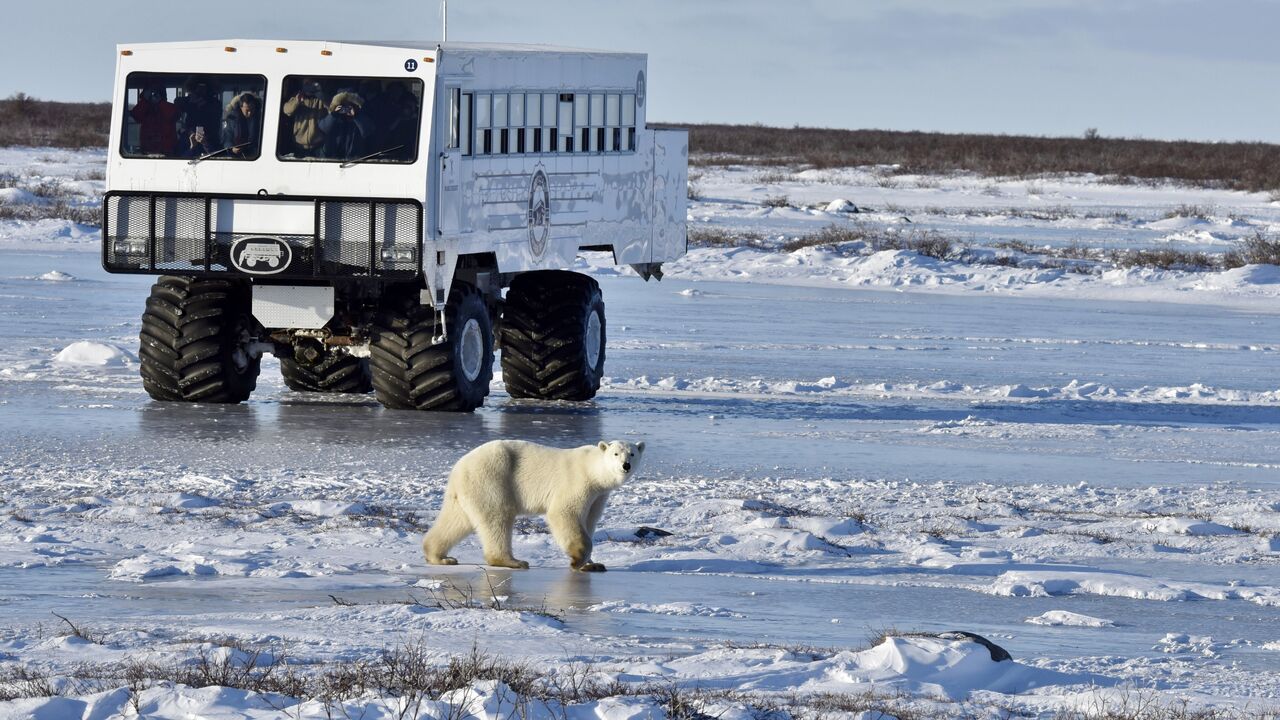
By day though, there’s safety and warmth in the Tundra Buggy, an elevated, tank-like conveyance built to trundle easily along the raised eskers and beach ridges that count as roads in the Churchill Wildlife Management Area (CWMA). This giant tract of boggy taiga and tundra near Churchill — our base for four days — abuts Hudson Bay’s western shore. Every October and November, hundreds of polar bears come together in this area because the land juts out into the bay and forms a shelf, causing the water here to freeze first. When this happens, typically by mid-November, the bears head out onto the sea ice to hunt seals all winter. This window when they’re waiting for ice to freeze is the best time to see them.
Though they blend in with the vast and empty landscape, our guide is adept at tracking them down. A full day watching polar bears lounge carelessly among frost-covered willows, or spar playfully with each other to ease the boredom of waiting for water to freeze, is magical.
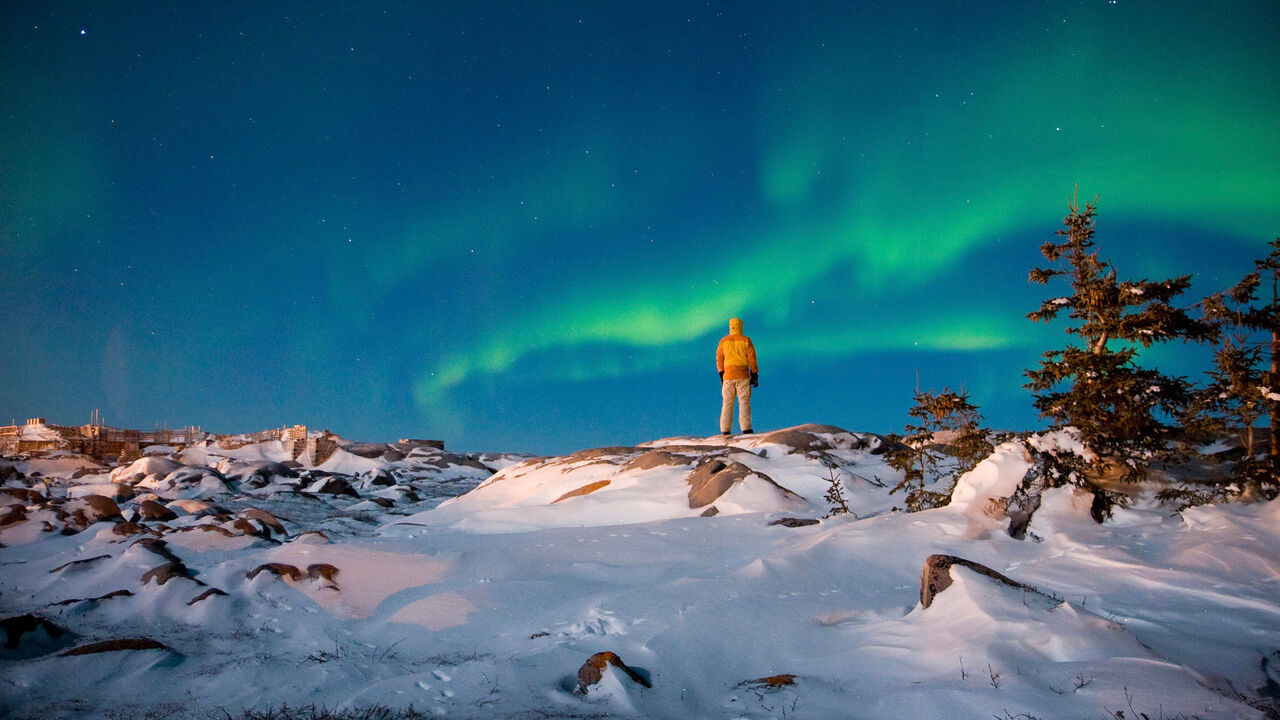
We also spend an afternoon at the Parks Canada Interpretive Centre outside of town, learning more about the people that originally populated the north. The region around Churchill was historically a meeting place for native populations including the Inuit, Dene, Chipewyan and Cree. European explorers and fur traders moved into the area in the 1700s, drawn by the network of Hudson Bay Company settlements and outposts. The lure wasn’t the landscape, but the prospect of making a fortune off beaver pelts — felted beaver hats were the height of fashion at the time.
Churchill’s human inhabitants spent a lot of time creating technologies that enabled them to live somewhat comfortably in the harsh climate. They made waterproof seal skin boots, caribou hide parkas and even igloos complete with a raised sleeping platform (the cold air would then sink below).
Fortunately for tourists, adventure gear has improved and we now dress in down-filled jackets and insulated expedition boots (and sleep in heated hotels). Yet still the wind blasts through my clothing every time I step outside — though Churchill is technically not inside the Arctic Circle, it’s located at 60 degrees latitude, with freezing temperatures and short days in the fall.
I’m again thankful for the heated Tundra Buggy during our last day chasing bears in Churchill. Unlike in Africa, where zebras and giraffes seemingly greet your jeep like a scene from The Lion King, life in the north reveals itself more slowly. You must sometimes wait hours while scanning the horizon, hoping to see an arctic hare hunkered between willows, a gyr falcon perched atop a rock, or distant movement that indicates a bear lumbering across the frozen coastal plain.
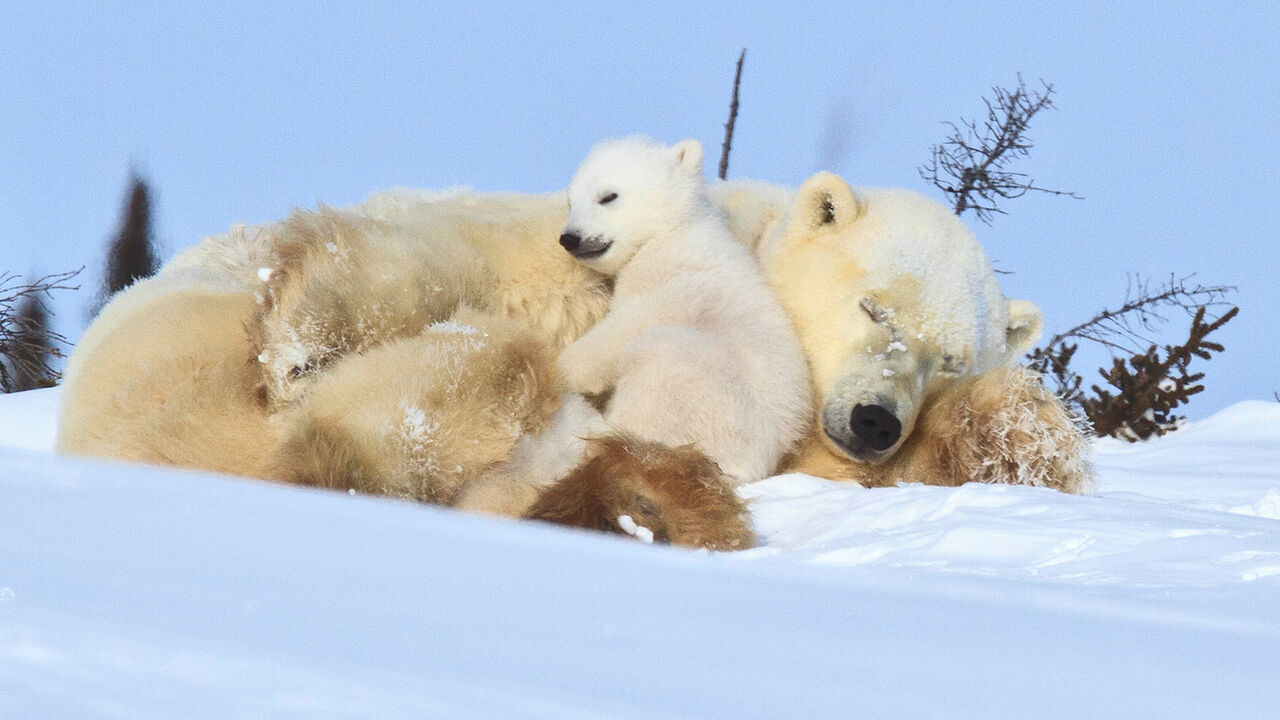
Our patience is rewarded. We see nine bears on our final tundra safari, including a mom and her yearling cub, as well as a lone female gnawing at grass and kelp in the intertidal zone. The bears are strong and healthy, just passing the days until the bay becomes solid footing. They’re at home in this wild place, waiting until they can spirit north for the winter, specks of yellowish-white swallowed up by a sea of ice.
To find out more about how to book your vacation across Canada talk to one of our Destination Specialists.

Embark on one of the world’s premier photographic safaris and experience rare ground-level access to polar bears in the pristine, untouched wilderness of northern Manitoba.
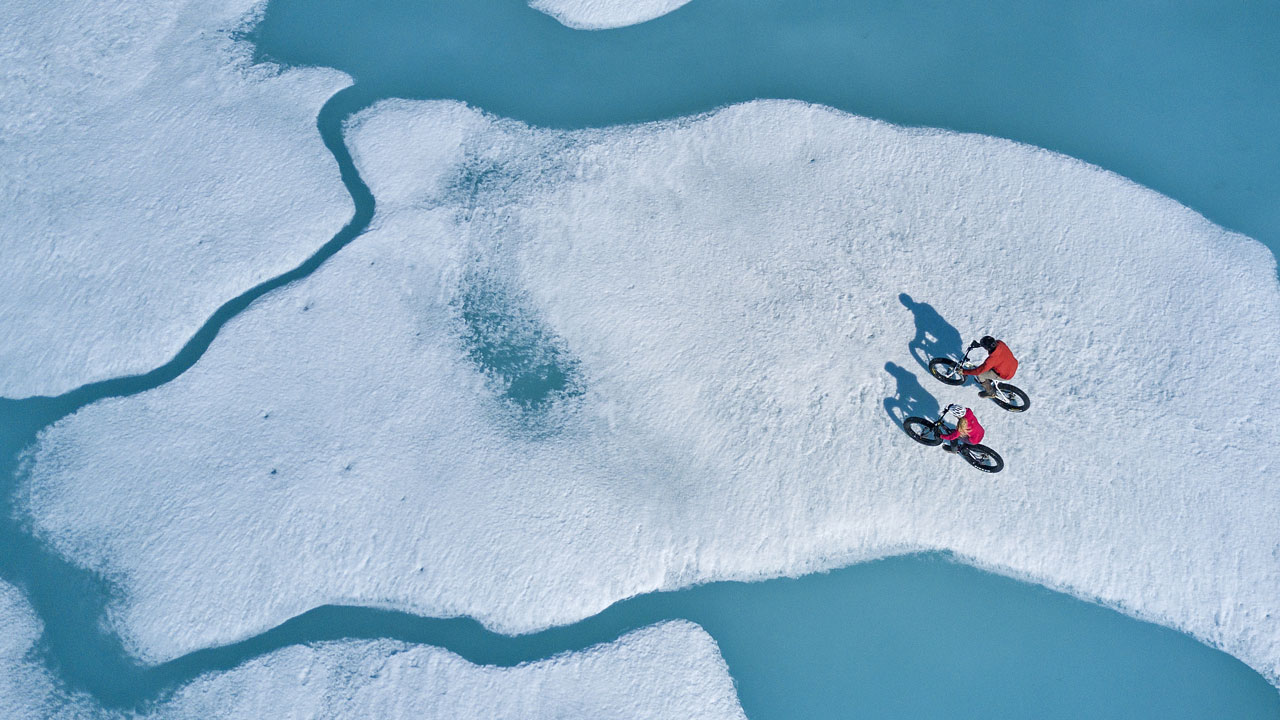
Northern-lights, polar bears, muskox and kayaking with beluga whales are all part of this unparalleled adventure for the wild at heart.
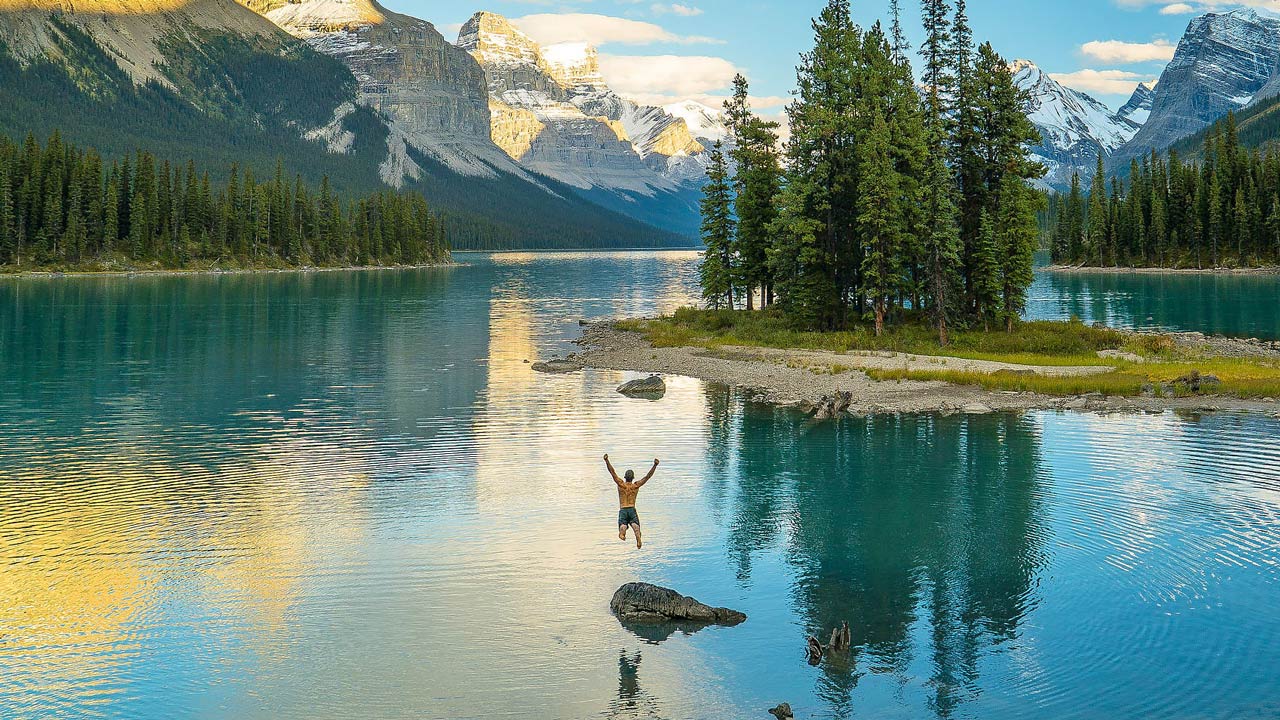
Take in vistas of majestic mountains and sparkling lakes; spot the wildlife of the Rockies and enjoy dedicated private transfers by car, boat, helicopter, and horse-back.